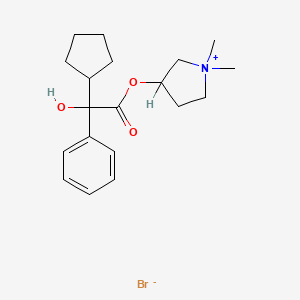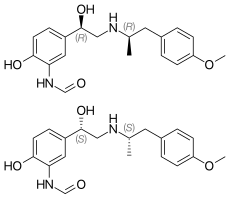
Monday, December 18, 2017
Sunovion Receives FDA Approval for Lonhala Magnair (glycopyrrolate) Inhalation Solution to Treat COPD

Thursday, September 8, 2016
Bevespi Aerosphere Approved by the FDA for Patients with COPD
Bevespi Aerosphere Approved by the FDA for Patients with COPD
Wednesday, November 30, 2016
Bevespi Aerosphere Approved by the FDA for Patients with COPD
 glycopyrrolate
glycopyrrolate  formoterol
formoterol About COPD
Monday, October 7, 2024
FDA Approves Ohtuvayre (ensifentrine) for the Maintenance Treatment of Chronic Obstructive Pulmonary Disease (COPD)
Verona Pharma plc (Nasdaq: VRNA) (“Verona Pharma” or the “Company”), announces the US Food and Drug Administration (“FDA”) approved Ohtuvayre (ensifentrine) for the maintenance treatment of chronic obstructive pulmonary disease (COPD) in adult patients. Ohtuvayre is the first inhaled product with a novel mechanism of action available for the maintenance treatment of COPD in more than 20 years.
Ohtuvayre is a first-in-class selective dual inhibitor of the enzymes phosphodiesterase 3 and phosphodiesterase 4 (“PDE3 and PDE4”) that combines bronchodilator and non-steroidal anti-inflammatory effects in one molecule. Ohtuvayre is delivered directly to the lungs through a standard jet nebulizer without the need for high inspiratory flow rates or complex hand-breath coordination.
“The approval of Ohtuvayre is a significant advance in COPD care, and we believe Ohtuvayre’s novel profile can change the treatment paradigm for COPD,” said David Zaccardelli, Pharm. D., President and Chief Executive Officer of Verona Pharma. “We plan to launch Ohtuvayre in the third quarter 2024, ensuring Ohtuvayre is available to help the millions of patients who still experience daily COPD symptoms.”
Michael Wells, MD, Associate Professor in the Division of Pulmonary, Allergy, and Critical Care Medicine at the University of Alabama Birmingham, commented: “In my experience, despite maintenance therapy, most patients report grappling with daily symptoms, including breathlessness and persistent coughing. COPD has a significant impact on both mortality and morbidity in the US, and until today, innovation in inhaled treatment modalities has been limited to combinations of existing treatment classes for over two decades. Ohtuvayre, as a first-in-class PDE3 and PDE4 inhibitor, offers a needed, unique approach and is an important advance in the treatment of COPD.”
The US approval of Ohtuvayre was based on extensive data including the Phase 3 ENHANCE trials, the results of which were published in the American Journal of Respiratory and Critical Care Medicine. In the ENHANCE trials, Ohtuvayre demonstrated clinical benefits both alone and when used with other maintenance therapies. Ohtuvayre was well-tolerated in a broad population of subjects with moderate to severe COPD.
The Company is fully staffed to launch and expects Ohtuvayre to be available in the third quarter 2024 through an exclusive network of accredited specialty pharmacies.
About Ohtuvayre (ensifentrine)
Ohtuvayre is the first inhaled therapy for the maintenance treatment of COPD that combines bronchodilator and non-steroidal anti-inflammatory activities in one molecule. Verona has evaluated nebulized Ohtuvayre in its Phase 3 clinical program ENHANCE (“Ensifentrine as a Novel inHAled Nebulized COPD thErapy”) for COPD maintenance treatment. Ohtuvayre met the primary endpoint in both ENHANCE-1 and ENHANCE-2, demonstrating statistically significant and clinically meaningful improvements in lung function. A fixed-dose combination of ensifentrine and glycopyrrolate, a LAMA, is currently under development for the maintenance treatment of COPD. Ensifentrine has potential applications for development in non-cystic fibrosis bronchiectasis, cystic fibrosis, asthma and other respiratory diseases.

